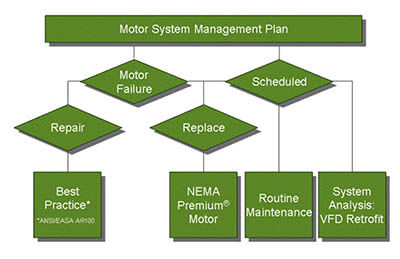Kitt Butler, director, Motors & Drives, Advanced Energy
Corporation, Raleigh, North Carolina, says, “You want to
identify the critical motors in your process. If one motor
in the middle of the line fails, then the whole mill could go
down. You cannot just wait for that to happen; you have to
have a plan ready before that motor fails. That is the crux of
motor management: plan before the motor fails. If you allow
the motor to fail before determining what to do, then you will
typically be in panic mode and bad things can happen.”
If the plan for a particular motor is to repair or rewind
upon failure, make certain to select a service center that adheres
to guidelines established by the Electrical Apparatus
Service Association (EASA); (see www.easa.com/energy for
more information).
Motor Spares Inventory
To address downtime, motor failure policy must define a
motor spares inventory; it must support actions that minimize
costly business interruptions. According to Butler, “A
spare motor inventory is indispensable in motor management
— especially for critical motors. Spares need to be within
arm’s reach, should an in-service motor go down.”
A spares inventory program should align with plans to upgrade
motors to NEMA Premium efficiency. Upgrade spares
as well as operating motors; replacing a failed older, less-efficient
motor with another standard efficiency motor provides
no energy savings or operating cost reduction.
Johnny Douglass, retired senior industrial engineer, Washington
State University Energy Program, says, “The spares inventory
includes motors that fit more than one application;
quite often motors in the one-to-100 horsepower range can
fit into a variety of locations. Consequently, the spares inventory
should consist of NEMA Premium motors; the fact that
a motor in spares may go many places dictates that all the
motors should be NEMA Premium motors.”
MotorMaster+ inventory lists are useful for sharing with
motor distributors. If you can’t stock some motors at your
facility because of lack of budget or storage space, you can
share in-service motor inventory lists with your distributor
and ask the distributor to stock those NEMA Premium motors
on your list. In this manner spare motors are available
on short notice, but stored elsewhere.
(Note: The DOE (U.S. Dept. of Energy) MotorMaster+ software
is free to U.S. addresses, and can be obtained at: www1.
eere.energy.gov/manufacturing/ tech_deployment/software_
motormaster.html.)
There are other financial limitations to a motor spares
inventory; for example, very large motors can be expensive
to store. Scheduled monitoring of such large motors gives
advanced warning; such monitoring allows sufficient lead
times to order a new motor or arrange for a motor to be rewound
during scheduled downtime.
As the purchasing agent for Qubica/AMF, Rick Streeter has
overseen the upgrade of motor spares and knows of the above
limitations. “I try to have a spare motor for every machine
whenever possible, but some of our motors are just too big to
keep in spares here on-site. For example, we use 150 and 200
horsepower motors that are just too big to keep in spares. On
the other hand, for the smaller motors I keep at least one spare
on hand for every type of motor that we use here.”
Repair or Replace?
Horsepower breakpoint. In part I of this series (October
PTE), horsepower breakpoint was covered in the context
of the repair-or-replace decision. It is also a consideration
in motor failure policy. The policy can be as elementary as
“always replace motors under 50 horsepower” — or more sophisticated.
Useful graphs (courtesy Advanced Energy Corporation)
for picking a horsepower breakpoint can be created using
special calculators. In one such graph, the vertical axis
represents motor horsepower and the other axis represents
hours of operation. The calculator plots a curve that depends
on the cost of electricity. Once a curve is plotted it is easy
to find the horsepower breakpoint that corresponds to any
payback period of operation. (Note: Tools for calculating the
horsepower breakpoint are available on the Advanced Energy
website; also see the “Horsepower Bulletin” @ www.advancedenergy.
org/md/knowledge_library/resources/Horsepower%
20Bulletin.pdf).
Butler points out, “Surveying all the motors in a facility can
be labor intensive. It takes eyeballs and legs. One has to walk
around and look at all the nameplates of the motors, recording
and processing all that information.”
Replace at failure. Motors should be tagged for replacement
upon failure. Gilbert McCoy, P.E., energy systems engineer
with the Washington State University (WSU) Energy
Office, Olympia, Washington, advises, “Use MotorMaster+
to calculate the energy savings for each motor in your plant.
Fortunately, MotorMaster+ can accomplish this for all the
motors in the inventory with one quick batch analysis. Tag
those motors that should be replaced upon failure so the
millwrights know what to do, and which spare motors should
be NEMA Premium motors versus older standard motors.”
Opportunities for energy savings are lost when spare motors
are not properly tagged. “The millwrights are likely to
pick an old standard efficiency motor and install it,” McCoy
points out. “At that point, the opportunity is lost for energy
savings throughout that motor’s operating life — which could
be ten years or more.”
More Recommendations
Frequent failures first. Some industries kick off their motor
improvement project by identifying motors with histories of
frequent failure. Obviously, besides replacing the motors it
is also prudent to identify and correct the root cause of the
problem. EASA has developed an in-depth seminar and reference
manual on “Root Cause Failure Analysis,” according
to Tom Bishop, P.E., senior technical support specialist for
the EASA, St. Louis, Missouri.
If the cause of failure is due to a harsh environment, then
you can reduce downtime and increase reliability — while
also realizing significant energy savings — by replacing those
problem motors either with premium-efficiency motors or
premium efficiency, severe-duty motors.
The Longview complex of the Weyerhaeuser Company
in Longview, Washington serves as an excellent example. It
instituted a policy calling for all non-IEEE 841 motors of 50
horsepower or less to be replaced upon failure with energyefficient
IEEE 841-2001 models — regardless of condition,
age or rebuild history of the existing motor.
McCoy recalls, “A few years ago we had the opportunity
to work with a Weyerhaeuser pulp and paper mill. A review
of the maintenance records showed 28 motors with histories
of frequent failures; these motors would fail every two
to four years, resulting in downtime and lost productivity.
The company jump-started its motor improvement program
by immediately replacing problem motors with new NEMA
Premium efficiency motors. It chose not only premium efficiency
motors but also NEMA Premium efficiency IEEE-841 petroleum and chemical duty motors. Some manufacturers
call these motors “extra tough” or “severe duty” motors; in
addition to an expected longer operating life and long warranties,
these motors are corrosion-resistant and have lower
vibration displacements.”
(A case study on the Weyerhaeuser motor failure policy
can be found in the electrical applications section of the CDA
website: www.copper.org/environment/sustainable-energy/
transformers/education/archive/weyerhaeuser.html.)
Monitor the spares. Spare motors are supposed to be
ready to replace failed, in-service motors. But how ready are
they? If the spares are not premium efficiency motors, then
you may be better off recycling them, depending also on factors
such as hours of operation. If they are NEMA Premium
motors, then they need occasional shaft rotation to avoid
“flat-spotting” — as do all motors sitting in storage.
As Douglass notes, “A motor upgrade program must address
spares as well as operating motors. Sometimes spare
motors of standard efficiency should be recycled — even if
freshly rewound. You may be able to recover some of the cost
from the motor components inside.”
Failed EPAct motors. The decision to scrap failed EPAct
motors and replace them with new NEMA Premium motors
should be based on a lifecycle analysis. EPAct motors are less
efficient than NEMA Premium motors, and no energy savings
are realized by putting an EPAct motor back in service. A
rewound motor could be even less efficient than when it was
new; however, a service center that adheres to EASA good
practice guidelines should be able to mitigate or resolve efficiency
losses. For more information on good practices, visit
the EASA website (www.easa.com/energy).
McCoy contends, “When we do our motor assessments, we
look mainly at replacing standard-efficiency motors — when
they fail — with NEMA Premium efficiency motors. Nonetheless,
depending on operating hours and utility rates, many
times it is also cost-effective to junk EPAct efficiency motors
when they fail and replace them with new NEMA Premium
efficiency motors.” Standardizing on T-frame motors also reduces
the number of motors that must be maintained in the
on-site spares inventory.
Oversized motors. Research shows that the efficiency of
most motors peaks for loads between 70 – 75 percent, and
declines below 50 percent. The situation is different for large
motors, however, according to McCoy. “Motor assessment
staff generally believe oversized, under-loaded motors are
bad,” he says. “They recommend replacing motors loaded
to less than 50 percent of their full load with smaller motors
matching load requirements. But large, standard efficiency
motors should not be replaced with smaller, standard efficiency
motors. The energy savings will be small or non-existent
because larger motors typically have higher, full-load
and part-load efficiencies than smaller motors. Large motors
generally maintain a high efficiency all the way down to 25
percent of load. The benefit comes from replacing oversized
motors with a smaller premium efficiency motor matched to
load requirements.”
summarizes, “Efficiency may be higher for larger
motors than for smaller motors, but it is still reduced when
not matched to the load.”
Minimize downtime with severe-duty motors. The true
cost of downtime is difficult to calculate and often underestimated.
Downtime is the subject of countless process
improvement projects within a typical company — which
speaks to its importance. A plant typically loses several percent
of its production capacity because of downtime; and
most plants do not calculate downtime costs accurately, underestimating
the total cost by 200 or even 300 percent.
Bruce Benkhart, director, Advanced Proactive Technologies,
Springfield, Massachusetts adds, “Downtime is crucial
to any facility, whether an office, a hospital, or an industrial
plant. Whether they are making widgets, cars or pharmaceuticals,
downtime means that production stops and profits
plummet. Downtime is ultimately the most important consideration.”
McCoy gathered data on the cost of downtime at a pulp
mill in British Columbia. “Downtime is critical for industrial
plants,” he says. “This pulp mill had a capacity of about 1,100
air-dried-metric-tons-per-day. We calculated the value of
the pulp produced at $25,000-per-hour at a price of $600-perton.
In the case of this pulp mill, the cost of downtime is
huge. The reliability and uptime benefits from new premium
efficiency motors can dwarf the energy costs. To realize these
benefits, motor managers in the mills and process industries
preferentially purchase “severe-duty” motors — or IEEE-841
petroleum and chemical duty motors.
“In a severe processing environment, replacing existing
motors with NEMA Premium severe-duty motors makes
good business sense, especially when downtime is critical,”
says Bishop, “but a severe-duty motor in a non-severe duty
application probably won’t save more energy than other motors
of the same efficiency.”
Frame adapters. Adapter rails and bases have been available
for decades. They are used to install T-frame motors in
systems designed for older U-frame motors.
Motor interchangeability is common today because of the
standardization of frame sizes. Motors of the same horse
power, speed and enclosure normally fit the same frame size,
even though the motors are from different manufacturers. In
other words, if the motors are in standard frame sizes, then
a motor from one manufacturer is interchangeable with a
similar motor from another.
Yet, in some situations, the frame sizes are not the same.
Motors have become more compact for a given horsepower,
primarily due to better insulation (Class H at 180° C) that
allows motors to run much hotter in a smaller package (Tframe).
What do you do when you find a motor of the older
U-frame type in your facility?
Regarding frame sizes, McCoy comments, “Motor manufacturers
make premium efficiency U-frame motors, but
such motors carry a considerable cost-adder. When we see
old U-frame motors in a plant, we know they are likely to be
repaired when they fail. They are often returned to service
because the mounting bolts and shaft heights for those motors
are different than those of a T-frame motor. Nonetheless,
we encourage the purchase of frame adapters or transition
bases, which ideally would be maintained in the spares warehouse and readily available when an old U-frame motor
fails. In this manner the old motor can be easily replaced
with a modern T-frame motor.”
Purchasing Specifications
Purchasing specifications cover a wide gamut of elements;
they identify and specify what motors to stock and how
many, and they document the decision-making process. The
following sections outline some key considerations relating
to the development of purchasing specifications.
Develop corporate support. Organizationally, energy efficiency
management tends to be a fractured process. A disconnect
often occurs between plant maintenance, engineering,
purchasing and finance. Cooperation needs to evolve
into teamwork before advances in energy savings can happen.
Rob Penney offers some insights on organization; he is senior
energy engineer for the Washington State University Energy
Program, as well as a professional mechanical engineer
and certified energy manager. He is responsible for the energy
savings team, business development and energy project
deliverables at WSU. “Within a business, purchasing makes
motor purchases, accounting pays the energy bill, and engineering
looks at the process,” he says. “They often do not
communicate effectively with each other. Only when each
pays attention to the motor systems, and they all work together
as a team, can they bring it all together, making good
motor management decisions and really saving energy.” The
team approach lends itself nicely to gaining corporate support.
Official mandates. Butler at Advanced Energy reminds,
“EISA was signed into law by George Bush in 2007. It covers
many energy-related topics,
including motors, and became
effective December 2010. For
general purpose motors from one
horsepower to 200 horsepower,
EISA raised mandated efficiency
levels above the levels of EPAct
legislation of 1992.” (See Table 1
for comparison of EPAct to EISA
efficiencies at various horsepower.)

Butler continues, “The Department
of Energy is mandated by
Congress to expand the efficiency
envelope for electric motors. It
has done so since 1992 without
using exotic materials and designs,
but it is reaching a point of
diminishing returns. Meanwhile,
the industry, efficiency advocates,
and other stakeholders are
recommending to the DOE that
it consider motors not previously
covered; for example, motors
with mechanical alterations that
do not affect motor efficiency
Gear motors are a good example.”
Prior to EISA, OEMs were motivated mainly by cost and
reliability; efficiency wasn’t a high priority. But now that has
changed. Emmanuel Agamloh, Ph.D., P.E., motor systems
engineer for Advanced Energy, says “We hear a lot about efficiency
now. OEMs are paying attention to the efficiency of
their motors in their equipment. The EISA legislation is playing
a vital role because the increase from EPAct to NEMA
Premium efficiency levels directly affects the choice of motors
by equipment manufacturers. At Advanced Energy we
often receive requests from OEMs to verify that electric motors
meet the EISA efficiency levels so they can be put in the
OEM equipment.”
Even higher efficiency. Some motor technologies provide
even higher efficiencies than NEMA Premium; referring to
the CDA’s technical reference library, induction motor engineers
have long known that replacing die-cast aluminum
with copper in the rotor squirrel cage reduces motor losses
by as much as 15 – 20 percent — thereby improving energy
efficiency.
Meanwhile, motor manufacturers have improved on copper
rotor technology to the point that copper-rotor motors
often exceed the NEMA Premium efficiency standard by a
few percentage points (Fig. 2).
As McCoy points out, “The highest standard for motor efficiency
is designated NEMA Premium; yet some motors built
with advanced technology exceed that standard by at least
a fraction of a percentage point or even by a few percentage
points. Those motors are often built with cast copper in the
rotor, or permanent magnets in the rotor for motors operated
exclusively with variable frequency drives.”
The advantages of permanent magnets might not be realized
with smaller motors.
MotorMaster+ includes an embedded,
motor-manufacturer inventory
of 17,000 motors, along with a priceand-
performance database. The program
allows search results of motors
to be listed in descending order of
full-load efficiency.
McCoy says, “Below twenty horsepower,
copper-rotor motors are likely
to be at the top of the energy listing.”
Discounts and incentives. Pay
attention to discounts as you make
payback calculations; they can be
significant. Look for discounts from
your distributor. List prices are
merely starting points for price negotiation.
Take advantage of volume
purchases and any available energy
program rebates.
“The catalogues and websites of
motor distributors give the list price
for each motor,” McCoy says. “The
truth is that manufacturers seldom
sell motors at list price and often offer discounts. The more motors an industry buys, the bigger
the discount they are likely to get. If I were to place a large
order directly with a motor manufacturer, I might then enjoy
a discount as big as 65 percent off the list price. Typically,
large industries achieve discounts of about 50 percent from
their local distributor.”
Terry Blodgett, branch manager (retired), Kaman Industrial
Technologies, Watertown, New York says, “The price of a
motor depends on the quantity ordered at one time. Buying
one at a time versus several at a time has a significant impact.
You could replace your motors one at a time, but if you buy
in multiples the discount will be much greater, and you will
have much more buying power to develop a much stronger
price if you buy plant-wide. The lower the price, the shorter
the payback period.”
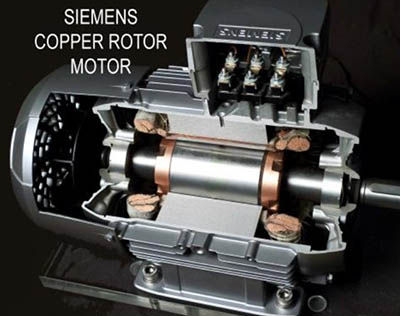
Figure 2 Below 20 hp, copper-rotor motors are likely to be at the
top of the energy listing.
- Click image to enlarge
Incentive programs provide additional savings. State programs
may provide financial incentive to assist end users in
purchasing energy efficient products.
NYSERDA (New York State Energy Research and Development
Authority) supported an incentive program in New
York State for many years. Benkhart says, “Applied Proactive
Technologies has been running the NYSERDA motors program
since 2002. Originally, the premium efficiency motor
program in New York State was strictly an incentive program
for the distributor and end user. It was funded by a systems
benefit charge that applied to all users of electricity. This
particular program provided an incentive to move up from
EPAct motors to premium efficiency motors; it was essentially
a rebate to bring down the cost of owning more efficient
motors. It provided an incentive to the distributors to
move those products and was a win-win program for both
the dealer and the user. It was quite effective in achieving
much higher penetrations of the more expensive — but more
efficient — NEMA Premium motors than would otherwise
have been the case.”
Other states may have similar programs worth investigating.
Since EISA legislation mandated NEMA Premium motors,
many utilities have discontinued their rebate programs.
Nonetheless, it is worthwhile to investigate whether “above
NEMA Premium” incentive programs exist following the enactment
of EISA on December 19, 2010. The “above NEMA
premium” efficiency designation often is referred to unofficially
as “ultra-efficient” or “super-efficient.”
Motor sizes and quantities. What motors should I stock
and how many? The goal is to match the most efficient motors
for the job to your needs. The following sections will provide
some insight to help you decide.
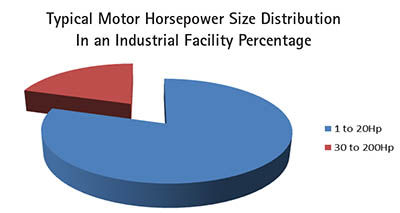
Figure 3 Percentage of motors in facilities by horsepower.
- Click image to enlarge
Small Motors, Big Savings
Eighty percent of the motors in most facilities are 20 horsepower
or less (Fig. 3). These have lower efficiencies than
larger motors, so there is an opportunity for significant gains
when they are replaced with NEMA Premium motors.
A graph (Fig. 4) — Motor Horsepower versus Percent Efficiency
Difference — was created using the efficiency table
from Advanced Energy. It illustrates the one-to-three-percent
efficiency gain that can be realized for motors up to 50
horsepower. The biggest improvements are for motors up
20 horsepower. Motors above 50 horsepower present lesser
percentage gains in efficiency.
Douglass explains, “The emphasis has been on larger motors.
That’s an appropriate starting point for your plan, but
smaller motors are important, too. They typically are more
numerous and the gain is much higher. Smaller motors of
the standard type with efficiency in the 80 percent range allow
for more improvement. If you have many of these motors
then you can save a great deal of energy. Sometimes a facility
has a huge number of small motors driving things, such as a
conveyor belt system; upgrading to a more efficient standard
results in huge savings.”
Severe-Duty Motors
In harsh operating environments, or whenever motors frequently
fail, IEEE-841 severe-duty motors are a good option.
McCoy provided an example through his work with the mill
in British Columbia. He concludes, “There are two reasons
why they were looking at extra-tough IEEE 841 petroleum
and chemical duty motors and severe duty motors. One is
the perception that the motor is going to last longer with
more uptime; the other reason is that these motors carry a
longer warranty. Generally, IEEE-841 motors have a five-year
warranty and NEMA Premium motors about three years; for comparison, general purpose motors and even EPAct efficiency
motors typically are warrantied for only one year.”
A final example comes from Joe Anderson, maintenance
manager at Interface Solutions, Beaver Falls, New York — the
largest producer of automobile gaskets. He is highly motivated
to minimize downtime using IEEE-841 motors. “We
depend on the reliability of the severe-duty NEMA Premium
motors to minimize the shutdowns resulting from rooftop
fan motor failures,” he says.
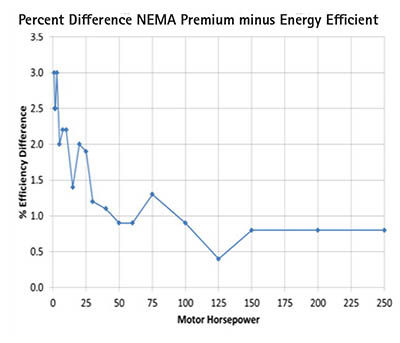
Figure 4 Motor horsepower vs. percentage efficiency difference.
- Click image to enlarge
Payback Calculations
Payback calculations are essential. Returns on investment in
9–24 months make sense. But where an EPAct or older motor
is used in an intermittent duty application, where the motor
runs only a few hundred hours a year, removing a functional
motor for replacement with a new NEMA Premium motor
is not a good investment. Look for applications with a quick
payback period.
Sharing Inventory Data
Distributors are invaluable. They see your present needs and
anticipate your future needs; they can also alleviate some
storage space concerns. Distributors understand what motors
are available and can provide appropriate solutions.
Kenny Jacobs, controls and drives product manager for KJ
Electric, Syracuse, NY, describes the relationship between a
distributor and its customers. “As an EASA motor shop, KJ
Electric provides motor survey assistance to its industrial
customers. This assistance includes, for example, helping its
customers minimize inventory by cross-referencing the one
motor that is suitable for replacing multiple motors.”
McCoy concurs, “MotorMaster+ is useful when you have
an in-service motor inventory because you can share inventory
data with your motor distributor. You can easily discuss
with the distributor which additional motors you are likely
to buy and which he should keep in stock. In this manner,
premium efficiency motors are ready to use in a spares inventory
at the distributor’s storeroom instead of your own
warehouse.”
Systems Approach
Look for energy savings in the entire system. The system extends
from the step-down transformer at the switchyard or
plant service entrance, to the motor-driven equipment and
process controls. Anything you can do to reduce system losses
saves energy.
Benkhart notes that “The motor represents a huge opportunity
for energy savings, but motors also are attached to systems.
Whether a pump, air conditioner, or compressor — the
system has its own associated losses. While many systems
would benefit from variable frequency drives, other savings
beyond the motor are possible. You have the transmission
via a belt, a pulley or a direct drive; and then the system itself.
The energy savings could be massive. There could be 50
percent savings in the system itself absent the motor. Before
embarking on those system challenges, however, start with a
motor that is the most efficient it can be.”
Variable Frequency Drives
Fans, mixers, conveyers and pumps are all good candidates
for variable frequency drives, or VFDs, which match motor
speeds to varying load requirements. VFDs enable motors
to run at speeds lower than the rated speed. Less energy is
wasted and in-line flow restrictions such as throttling valves
or inlet discharge dampers can be eliminated.
One believer in VFDs is Douglass, who says, “Often some
of the greatest savings are realized by converting fixed speed
drives to variable frequency drives. In airflow or liquid flow
situations, a motor often drives a fan or pump and an air
damper or a valve modulates the flow. In these situations,
double-digit savings can be realized by converting to an electronic
variable frequency drive. These motor controllers can
be retrofit to an existing motor application and accomplish
tremendous savings by eliminating the pressure drop associated
with a modulating valve or a damper, whose functions
are replaced by simply slowing down the speed of the motor.
In these situations, you can save as much as 40 percent in
electrical energy costs, depending on the fraction of time the
system operates at a lower flow.”
VFDs are cost-effective; they increase productivity, lower
operating costs and waste less energy. Joe Anderson at Interface
Solutions comments, “Our plant’s variable speed drive
inverter duty ready NEMA Premium motors are working
very well. Our process needs exact amounts of flow, and the
loads vary all over the place. With the variable speed drives,
we can better control the process.”
Match Motors to Load
Overloaded motors tend to run hotter; motors that run too
hot tend to fail earlier than motors matched properly to the
load. The life of the motor insulation is reduced by one-half
for every 10° C rise in motor temperature.
Motors can run somewhat overloaded for short time periods.
The nameplate on the motor gives a service factor multiplier
that is the percent-operational-overload acceptable for the motor. A service factor of 1.15 indicates the motor can
operate 15 percent overloaded without seriously damaging
the motor, but one should not expect the best performance
or maximal service life.
As an example, see the image of the nameplate (Fig. 5)
from a Baldor Reliance motor whose service factor of 1.15 is
circled in red in the image, i.e. — SER. F. 1.15.
So far, it has been assumed that the supply voltage is within
specified limits. An under-voltage contributes to an overheating
condition, too, putting undue stress on a motor.
Douglass says, “When matching the motor to the load,
be careful to not undersize the motor. It is particularly bad
when the motor is undersized and the voltage is under voltage.
This combination tends to make the motor run too hot.
When a motor runs hot its service life is shortened. Even if
the voltage is correct an undersized motor running into its
service factor will be operating at a temperature higher than
its design temperature — thus shortening its life. Service
factors are often 15 percent, but can be as low as 0 percent
when the motor is controlled by an adjustable speed drive.
Sometimes the service factor can be higher than 30 percent.
One should never plan to operate very much or often in the
service factor.”
Space Constraints
Be cognizant of space limitations when specifying a motor
as a replacement for existing EPAct or standard-efficiency
applications. Not all of the motor dimensions are specified
in NEMA standards; some motor dimensions are specific to
each motor manufacturer.
Check a “NEMA Motor Dimensions Reference Chart”
against your space limitations or contact your motor distributor
for any dimension in question.
McCoy adds, “NEMA has a frame assignment series. Motors
are interchangeable parts. Premium efficiency motors,
energy efficient motors, and standard efficiency motors all
have the same mandated dimensions and tolerances set by
NEMA. The one difference between a premium efficiency
motor and a standard efficiency motor
is that the former may stick out further
in the off-drive end direction. If you are
space-constrained, then talk with your
motor supplier to obtain the dimensions
of the new premium efficiency
motor and ensure it fits before you
place an order.”

Figure 5 Baldor Reliance motor with service factor
multiplier (circled in red) of 1.5.
- Click image to enlarge
Financial Feasibility
Is the move to these energy-efficient
products financially feasible? The answer
is a resounding “Yes!”
Energy-efficient motors are among
the best investments available, especially
considering the high cost of energy
and today’s uncertain economic
environment. Electric motor-driven
equipment accounts for 30–50 percent
of the electricity consumption in commercial
facilities in the United States. Industrial facilities
consume 60–70 percent.
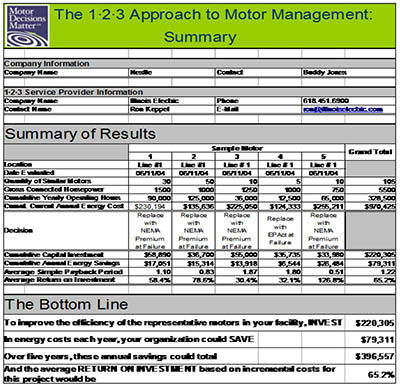
Figure 6 Example spreadsheet from 1-2-3 Approach to Motor Management
Summary, from Motor Decisions Matter.
- Click image to enlarge
Butler advises, “Motors belong to a very important electric
technology classification because they use a lot of energy.
The lifecycle costs of an electric motor are comprised mostly
of payments for electricity. Anywhere from 97– 98 percent
of the total lifecycle cost is for electricity; only two to three
percent is invested in the initial capital cost to purchase that
motor and in the maintenance cost as well. When considering
a new motor purchase, it is very important not to focus
just on initial price but focus mainly on the efficiency of the
motor. In the long run you will mostly be paying for the energy
consumed by the motor.”
Simple payback analysis shows the move to energy efficient
products is feasible. Computing the return on your
financial investment before investing the capital dollars is
possible where energy is a factor.
Says Benkhart, “In the move to more expensive — but
clearly more efficient products — the important considerations
are the price of the new motor and the cost of operating
a motor. While an incentive program helps reduce the
purchase price of a higher-cost NEMA Premium motor, there
is still the bigger expense of operating the motor. Reaching
the correct answer requires many pieces of information, including
the type of motor, how often the motor is in operation
(duty-cycle, single or multiple shifts), the horsepower,
the motor efficiency and the percent motor load as well as
the local cost of electricity, which typically ranges from $0.04
or $0.10 per kilowatt-hour. By entering the data collected
during an inventory into a software tool such as MotorMaster+,
a range of payback periods for a variety of operating
parameters and utility costs can be calculated. The resulting
payback calculations will help determine the feasibility of
going forward with new, efficient, NEMA Premium motors.”
Benkhart adds, “Most companies will approve a decision
to buy energy saving equipment if the investment meets
the simple payback or ROI requirement of less than 18 – 24
months. For a motor operating more than 6,000 hours at
roughly $0.10 per-kilowatt-hour, the
analysis yields a simple equation that
estimates payback somewhere between
six and twenty-four months. If
the extra cost of buying the new NEMA
Premium motor is $300 but the annual
energy savings is $400, the nine-month
payback clearly meets the payback criteria.
Such information gleaned from
our assessments and software tools
empowers the customer to make good
financial decisions regarding energy
efficiency. Absent motor population
information and tools to collect and
analyze the data to make an informed
decision, the facility is running blind.”
There are many tools to help make
such payback decisions. Besides MotorMaster+,
many motor manufactur-
Figure 5 Baldor Reliance motor with service factor ers offer their own proprietary tools.
Advanced Energy Corporation, for example, has a motor
management spreadsheet.
A sample spreadsheet is shown in Figure 6. It is derived from
the Motor Decisions Matter 1-2-3 Approach to Motor Management
tool at www.motorsmatter.org/tools/123approach.
html.
This spreadsheet allows five motors to be examined alongside
additional quantities from similar motors. It is an excellent
tool for calculating payback and energy savings. The
user is required to provide accurate information regarding
repair costs and new motor pricing.
Summary
A motor failure policy built on the information provided in
this work removes risk and indecision from the picture when
a motor failure occurs. For example, tagging every spare and
in-service motor in the facility with actionable information
ensures that wrong decisions will not be made due to lack of
such information.
Whether the policy stipulates replacing any motor under
a certain horsepower, installing IEEE 841 motors in place of
critical motors, or adherence to EASA guidelines for when
repair is appropriate, you have taken the steps to minimize
costly downtime and business interruptions.
Purchasing specifications developed using the technical
tools and industry resources presented in this publication
could serve as the blueprint or reference document for
your motor management plan. The document can specify
what new technologies to invest in, such as ultra-efficient
copper-rotor motors or VFDs; it can specify the number of
commonly used motors to stock in your facility; and it can
specify the tools to assess which motors are most efficient
and which yield the highest energy savings and shortest time
to payback. The purchasing specifications can also identify
preferred motor distributors, who provide the best volume
discounts, as well as pre-sales and post-sales support.
Although the percentages certainly require updating, it is
worth mentioning that the U.S. Department of Energy reported
in 1998 that only 11 percent of customers had written specifications
for motor purchases and only two-thirds of those
customers included efficiency in their specifications.
Acknowledgements
CDA acknowledges the assistance of government and industry-
based motor experts in the creation of the Motor Management
Best Practices series. Contact information for the
motor experts cited in this publication is as follows:
Emmanuel Agamloh, Ph.D., P.E. Motor Systems Engineer
Advanced Energy Corporation, Raleigh, North Carolina
(919) 857-9023, eagamloh@advancedenergy.org.
Bruce Benkhart, Director, Advanced Proactive Technologies,
Springfield, Massachusetts. Mr. Benkhart is available at
(413) 731-6546 bruce@appliedproactive.com.
Tom Bishop, P.E., Senior Technical Support Specialist,
Electrical Apparatus Service Association (EASA), St. Louis
Missouri. http://www.easa.com.
Kitt Butler, Director, Motors and Drives at Advanced Energy
Corporation (AEC), Raleigh, North Carolina (919) 857-
9017.kbutler@advancedeneergy.org.
Johnny Douglass, Retired Senior Industrial Engineer,
Washington State University (WSU) Extension Energy Program
(360) 956-2086 douglass.johnny@gmail.com.
Gilbert A. (Gil) McCoy, P.E. Energy Systems Engineer with
the Washington State University (WSU) Energy Office, Olympia,
WA. 360) 956-2086, mccoyg@energy.wsu.edu.
Rob Penney, P.E., Certified Energy Manager, Senior Energy
Engineer at Washington State University (WSU). Mr. Penney
is available at (360) 628-2053, penneyr@energy.wsu.edu.

Emmanuel Agamloh
|

Bruce Benkhart
|
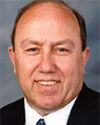
Tom Bishop
|

Kitt Butler
|

Johnny Douglass
|
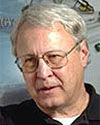
Gilbert A. (Gil) McCoy
|

Rob Penney
|





